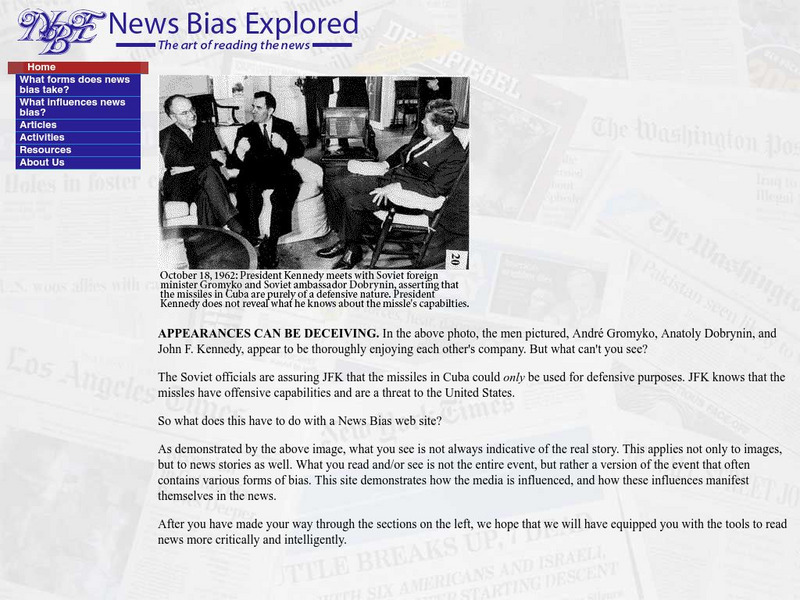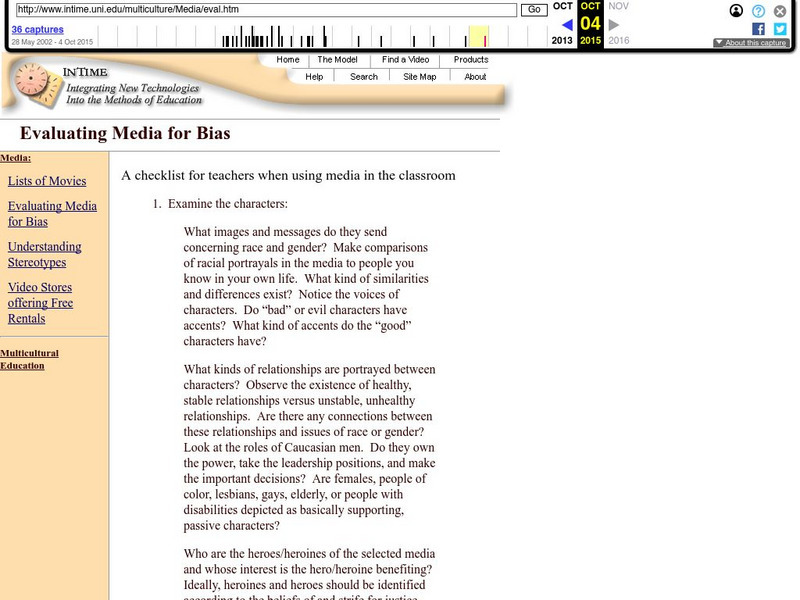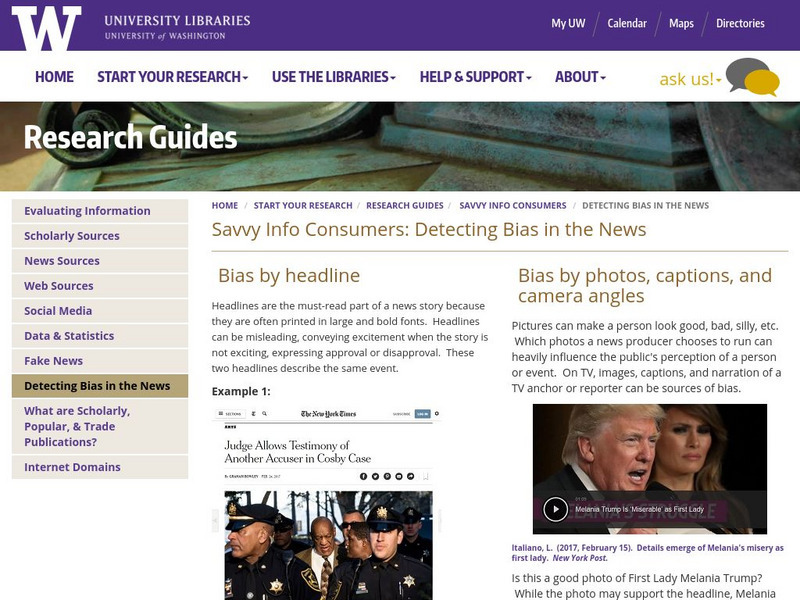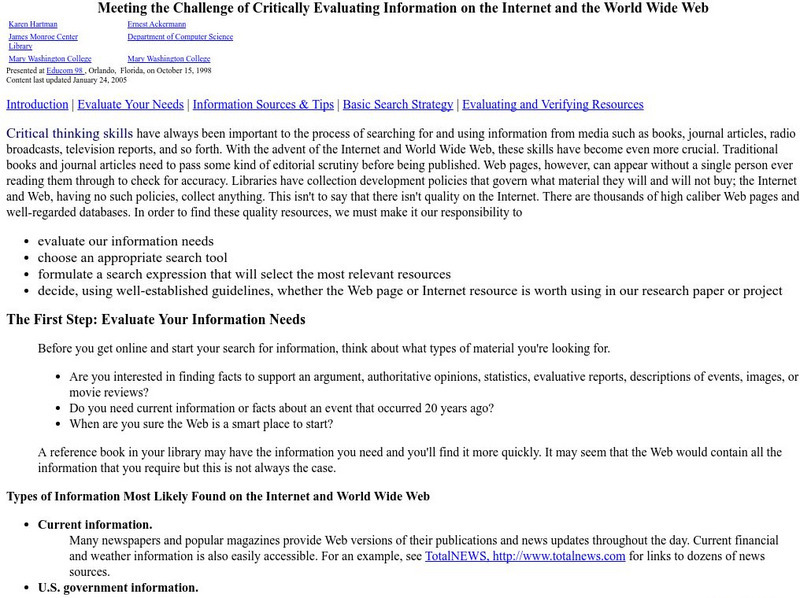University of Michigan
News Bias Explored: The Art of Reading the News
Real-life examples, interactive headline and image games and brief explanations make this an attractive site for learning to recognize media bias.
Media Smarts
Media Awareness Network: What's in a Word? Lesson Plan
Help 5th through 7th graders explore the power of words and their capacity to influence our thinking with this lesson from the Media Awareness Network. An easy-to-print .pdf version is linked from the top of the page.
Other
In Time: Evaluating Media for Bias
This site provides a checklist, especially helpful for teachers, that details the way to check media elements to be used in the classroom for biases. This site provides six questions to help evaluate the effectiveness of the media in...
PBS
Pbs Learning Media: Point of View: Who, Me? Biased?: Understanding Implicit Bias
In this interactive lesson, students explore the extent to which society (and they themselves) may discriminate based on factors they're not even aware of, implicit biases. Why haven't laws been enough to eliminate discrimination? After...
University of Washington
Bias in the News
This handy page clearly explains various ways in which bias can creep into news reports. Examples of each method are given.
Other
How to Detect Media Bias & Propaganda [Pdf]
A portion of a larger book, this site is critical of journalism as it is presently practiced. This portion offers characteristics of critical news consumers.
Other
Webliminal: Critically Evaluating Information on the Internet
This site gives excellent information on why it's important to evaluate the content of everything you find in cyberspace, and also tells you how to do so. It also contains information about using search engines effectively and how to...
Louisiana Department of Education
Louisiana Doe: Louisiana Believes: English Language Arts: Grade 8: The Tell Tale Heart
Eighth graders explore the role of the narrator and point of view in a text. Students will understand how the narrative voice of a text can blur the line between fact and fiction and how a story truth is often different from but relates...
Johns Hopkins University
Johns Hopkins University Sheridan Libraries: Information and Its Counterfeits
Distinguishing information from propaganda, biased reporting and misinformation is an important skill. This short article defines each of these, and provides examples of each.
Library of Congress
Loc: The Titanic: Shifting Responses to Its Sinking
In 1912, popular media headlined the sinking of the world's largest luxury passenger ocean liner while on its maiden voyage. Newspapers captivated the world's attention with stories from survivors and about victims who did not survive....









